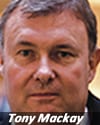Chi-X Australia has signalled its intent to offer stiff competition to the Australian Securities Exchange (ASX) this week by undercutting the incumbent’s trading fees, but Tony Mackay, former CEO of Chi-X Global, predicts a long, hard battle for market share.
On 11 October, Chi-X Australia, a subsidiary of exchange operator and technology provider Chi-X Global, confirmed it would introduce maker-taker pricing to the Australian market, charging 0.06 basis points for executing passive orders, but levying a 0.12 bps fee for aggressive orders, i.e. those that match against orders resting on the Chi-X Australia order book.
The ASX typically charges 0.15 basis points for executing trades, having almost halved its fees last year in response to impending competition. It remains to be seen whether the ASX will retaliate by announcing even cheaper pricing for its PureMatch high-speed trading platform ahead of 31 October, the date on which new market integrity rules come into force and Chi-X Australia starts trading.
Mackay, who initiated talks with the government on opening Australia’s equity market to competition in 2009, is optimistic that Chi-X Australia can emulate the success of other Chi-X venues across the globe. “They have a proven model and a good team. But experience shows that winning the commitment of liquidity providers is what really counts,” he says.
Mackay worries that the platform will have to challenge the ASX without some of the weapons that Chi-X Europe had in its armory when he launched the pan-European multilateral trading facility (MTF) in London in 2007. Specifically, Chi-X Australia will not be able to tempt liquidity providers away from the ASX with lower clearing fees following its decision, announced 20 June, to use its rival’s ASX Clear and ASX Settlement post-trade services. In contrast, Chi-X Europe came to market with a new low-cost clearing proposition, developed in partnership with Fortis Bank, which helped it to attract liquidity away from European exchanges. Chi-X Europe, which is now awaiting the outcome of a UK Competition Commission investigation into its planned sale to BATS Global Markets, a US-based exchange operator, now commands 18% of all equity trading in Europe.
Before deciding to sign up with the ASX, Chi-X Australia had invited post-trade service providers to explore the possibility of establishing a new Australian clearing solution. Mackay suggests that in the longer term a regional approach might enable Chi-X Australia to further differentiate itself. “The clearing solution will be pan-Asian,” he predicted.
Chi-X Australia was awarded a market licence in principle in March 2010. The Australian Securities and Investments Commission (ASIC) assumed regulatory powers from the ASX in August 2010, issued its proposals for a new Australian market structure in November and finally set a deadline for the introduction of market integrity rules in March this year.
Chi-X Australia will launch with the support of 22 brokers. In its first week of trading, it will complete two settlement cycles, trading just six stocks, BHP Billiton, CSL, Leighton Holdings, Origin Energy, QBE Insurance and Woolworths. ASX’s PureMatch, a low-latency venue with a capacity of 100,000 orders per second, is only permitted to go live one month after Chi-X Australia’s launch due ASIC’s wish to minimise the operational risks arising from the introduction of new trading platforms.
Mackay, who until recently has been serving as chairman emeritus at Chi-X Global, supporting Chi-X Australia by developing relationships with brokers and other liquidity providers and stakeholders, sees Australia as a significant test case that could have widespread implications for the rest of Asia.
“Regulators in Hong Kong and Singapore will watch the outcome of Australia’s market changes very closely,” he said. “We now have rules written specifically for the Asia-Pacific environment and don’t have to rely on examples from Europe and the US.”
